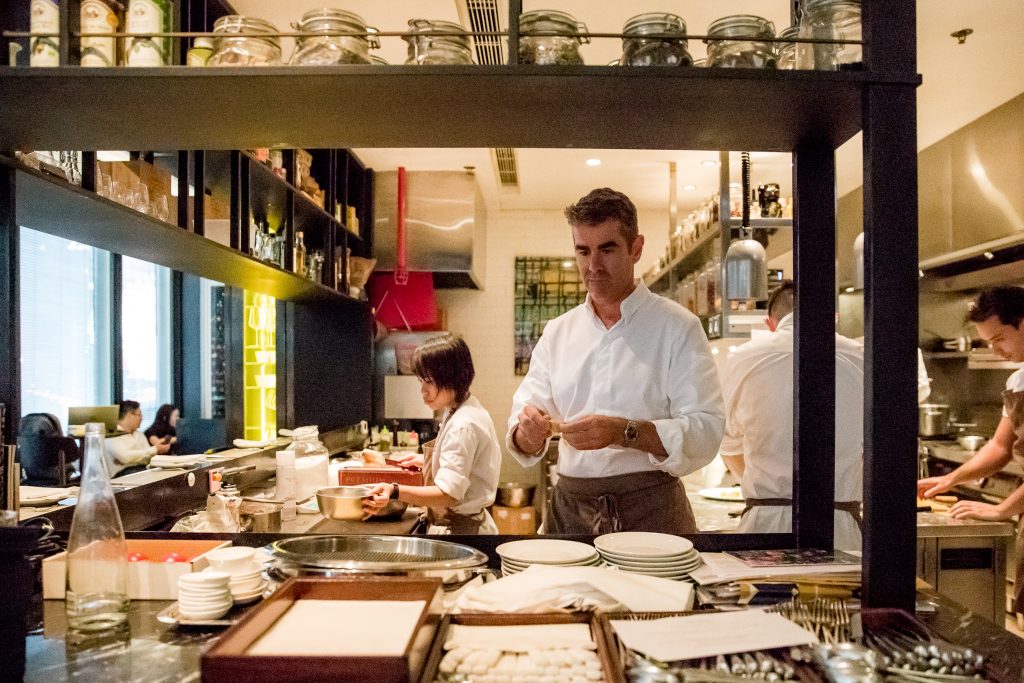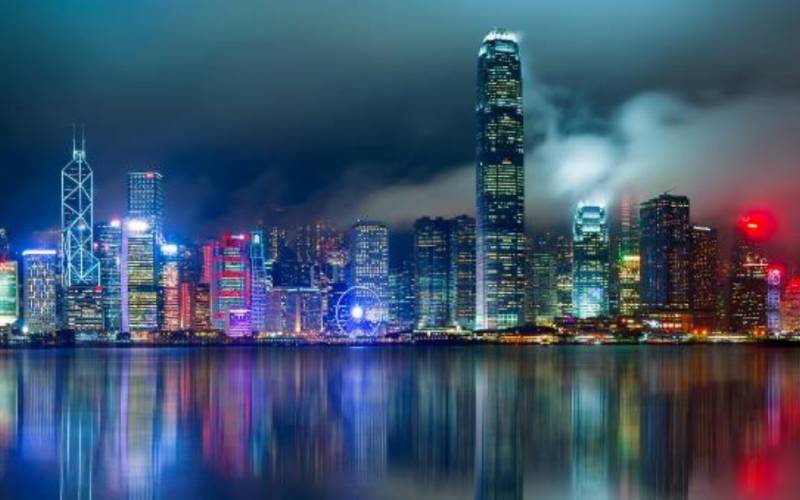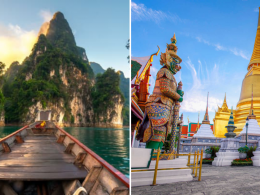For gourmets with discerning taste, Hong Kong is top of mind as one of the culinary capitals of the world. One can think of dishes like perfectly roasted goose, springy beef brisket noodles, or trays of freshly steamed dim sum. From simple local delights at cha chaan teng (local cafes), to classic Cantonese dishes at dai pai dongs (street stalls), to sophisticated wine and dine at Michelin-starred restaurants, Hong Kong has it all.
Hong Kong’s reputation as a gastronomic destination was cemented in 2009, when the Michelin Guide debuted in the city, bestowing 31 stars on 22 top restaurants in the city. Overnight, the guide created an instant buzz among foodies, making Hong Kong the port of call for some of the best food in Asia, and for ambitious chefs to make their mark.
“The Michelin Guide championed Hong Kong’s culinary scene by highlighting the high standards of Cantonese cuisine. In 2009, the guide recognised Lung King Heen with three Michelin stars, it was the first and only Chinese restaurant in the world at the time to receive such recognition, which helped to put Cantonese cuisine on the map.” Said Nicolas Achard, Managing Director of Michelin Food & Beverage Asia.

Cantonese cuisine at the three MICHELIN Starred Lung King Heen
Today, Lung King Heen still holds three Michelin stars, making it the Chinese restaurant with the longest three-star winning streak in 12 consecutive years. This unparalleled accolade propelled Lung King Heen, and along with it, Cantonese cuisine to fine-dining status, enticing gourmets to showcase the freshest ingredients and cooking techniques to enhance their natural flavours through steaming, stir frying, roasting and braising. These culinary skills are not learnt overnight but through years of experience apprenticing under a master chef.
The Michelin Guide has not only shone a spotlight on Hong Kong’s culinary excellence and boosted the Hong Kong F&B scene, but also inspired many aspiring young chefs to seize the opportunity to experiment with ingredients and innovate new cooking techniques in the kitchen.
Young and ready to take on the world

Hong Kong-born Chef Vicky Cheng, who trained in the culinary management programme at George Brown College in Toronto, returned to Hong Kong in 2011. He set up VEA in 2016 and won a Michelin star in its first year of operations. Barely 36 years old, Cheng created waves with his fusion concept of “Frenchifying Chinese food”.
Young chefs are also encouraged to be more creative, as evidenced by the only female chef in Asia, Vicky Lau of Tate Dining Room, who was awarded two Michelin stars in the 2021 edition. Using Hong Kong as a source of inspiration, Lau has created “Ode to” menus, in which she focuses on ingredients essential to Chinese cuisine. These include explorations of tea, tofu and soy sauce.

Hong Kong-born chefs like Lau and Cheng who are trained in French cooking techniques are keen to pay homage to their roots by experimenting with local ingredients and food products and creating an East meets West taste with their dishes. This can be as simple as the humble egg waffle with scoops of ice cream and chocolate sauce, to steamed buns filled with creamy salted egg custard filing, to Cheng’s roasted sea cucumber on a bed of tiger prawn sauce.
Beyond Cantonese Cuisine

8 ½ Otto e Mezzo BOMBANA, is the first and only Italian restaurant outside Italy to be awarded three Michelin stars. Head Chef Umberto Bombana, who has lived in Hong Kong for almost three decades, loves the energy, convenience and cosmopolitan feel of Hong Kong.
Another notable restaurant would be New Punjab Club, which has elevated Punjabi dishes to new heights. With menu items like tandoori venison washed down with refreshing mango lassi, it is also the world’s first Pakistani restaurant with a Michelin star.
The vibrant dining scene has also attracted many international chefs to set up shop in Hong Kong. One of them is chef Shane Osborn who came to Hong Kong in 2012 and opened St Betty before setting up his own place, Arcane, two years later, and in 2018 it was recognised with its first star.

“Hong Kong is a truly international city with a dynamic food culture. People like to explore and try new things, and are very open-minded when it comes to restaurants. You can get every type of cuisine in Hong Kong and for a restaurant or chef, that’s a very exciting place to be.” Said Shane Osborn.
Shane recently formed The Arcane Collective, expanding his portfolio of restaurants from one-star Arcane to Cornerstone and now Moxie, featuring vegetarian and seafood dishes, at The Landmark.
Street eats propelled to stardom
Hong Kong is not only recognised for its fine-dining restaurants but also those that specialise in local eats, ideal for those on smaller budgets, or for adventurous diners wanting a taste of the city’s street stalls. Aside from three-starred fine-dining restaurants, Hong Kong boasts among the most affordable Michelin-starred restaurant. Located in the working-class neighbourhood of Sham Shui Po, Tim Ho Wan is affordable and has held on to its Michelin Star accolade for 10 consecutive years.

Hong Kong is one of a few cities where its street food is recognised by the Michelin Guide. The Jordan and Yau Ma Tei districts have several street eats that are included in the guide. For noodle lovers, Mak Man Kee Noodle Shop is over six decades old, still serving springy egg noodles with generously sized tiger prawn wantons. Meanwhile, Kai Kai Desserts is known for its traditional Cantonese desserts like freshly ground black sesame soup, almond soup, and glutinous rice dumplings filled with black sesame paste.
The future is green

In the 2020 edition of the Michelin Guide, the Green Star was introduced to recognise restaurants that “embody and embrace sustainability in their day-to-day operations”. In Hong Kong, Roganic was bestowed with this honour. Led by top British chef Simon Rogan, whose team uses every part of an ingredient to minimise food waste, the restaurant grows its own herbs and microgreens, and uses dry aging and curing techniques to extend the shelf life of food products.
With the growing F&B scene, chefs are championing food sustainability methods, with many choosing to source for locally produced ingredients like yellow chicken, organic vegetables and herbs. The focus on sustainability has made local and overseas diners more aware of Hong Kong’s quietly flourishing agricultural sector.
It will be fascinating to see which new restaurants are included in the 2022 edition of the Michelin Guide. In 2009 Hong Kong was awarded 31 stars for 22 restaurants. Today, it boasts 95 stars for 69 restaurants, which clearly proves Hong Kong has the talent, experience and ambition to merit the highly sought-after stars.

Despite the pandemic, Hong Kong’s food scene has been thriving, with more restaurants opening, and there are now more restaurants than at the beginning of the year. The city has done an excellent job at keeping the number of local cases to single digits in the last few months, and with an increasing number of people being vaccinated, residents feel more confident dining out. This is evident particularly in fine-dining restaurants, where diners must book two to three months ahead. When borders open, there is no doubt that visitor will be spoilt for choice with the plethora of cuisine Hong Kong has to offer.
“Hong Kong Chefs’ Playbook”, a new series featuring Michelin star chefs and their love affair with Hong Kong is available for streaming now. The first two episodes, Yau Ma Tei with Vicky Lau” and “Wong Tai Sin with Shane Osborn” are available here at Discover Hong Kong.
Adapted from press release







